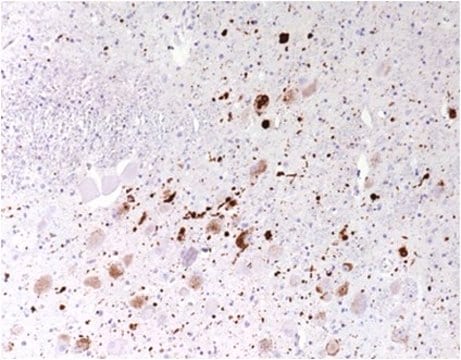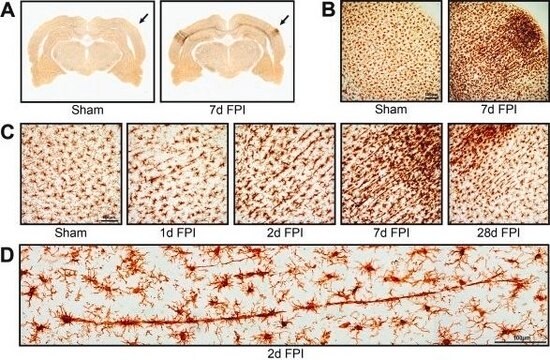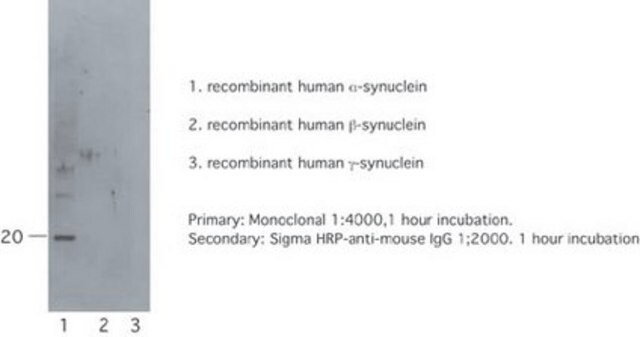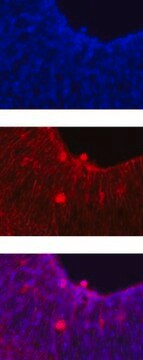ABN2260
Anti-alpha-synuclein N103 fragment
from rabbit
Synonym(s):
Non-A beta component of AD amyloid, Non-A4 component of amyloid precursor, NACP
About This Item
Recommended Products
biological source
rabbit
antibody form
affinity isolated antibody
antibody product type
primary antibodies
clone
polyclonal
species reactivity
human
packaging
antibody small pack of 25 μg
technique(s)
immunocytochemistry: suitable
immunohistochemistry: suitable
immunoprecipitation (IP): suitable
western blot: suitable
isotype
IgG
NCBI accession no.
UniProt accession no.
target post-translational modification
unmodified
Gene Information
human ... SNCA(6622)
General description
Specificity
Immunogen
Application
Neuroscience
Immunoprecipitation Analysis: A representative lot detected alpha-synuclein N103 fragment in Immunoprecipitation applications (Zhang, Z., et. al. (2017). Nat Struct Mol Biol. 24(8):632-642).
Immunocytochemistry Analysis: A representative lot detected alpha-synuclein N103 fragment in Immunocytochemistry applications (Zhang, Z., et. al. (2017). Nat Struct Mol Biol. 24(8):632-642).
ELISA Analysis: A representative lot detected alpha-synuclein N103 fragment in ELISA applications (Zhang, Z., et. al. (2017). Nat Struct Mol Biol. 24(8):632-642).
Immunohistochemistry Analysis: A representative lot detected alpha-synuclein N103 fragment in Immunohistochemistry applications (Zhang, Z., et. al. (2017). Nat Struct Mol Biol. 24(8):632-642).
Quality
Western Blotting Analysis: 2 µg/mL of this antibody detected alpha-synuclein N103 fragment in GFP-alpha synuclein N103.
Target description
Physical form
Storage and Stability
Handling Recommendations: Upon receipt and prior to removing the cap, centrifuge the vial and gently mix the solution. Aliquot into microcentrifuge tubes and store at -20°C. Avoid repeated freeze/thaw cycles, which may damage IgG and affect product performance.
Disclaimer
Not finding the right product?
Try our Product Selector Tool.
Certificates of Analysis (COA)
Search for Certificates of Analysis (COA) by entering the products Lot/Batch Number. Lot and Batch Numbers can be found on a product’s label following the words ‘Lot’ or ‘Batch’.
Already Own This Product?
Find documentation for the products that you have recently purchased in the Document Library.
Our team of scientists has experience in all areas of research including Life Science, Material Science, Chemical Synthesis, Chromatography, Analytical and many others.
Contact Technical Service







